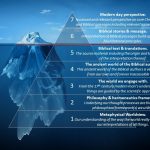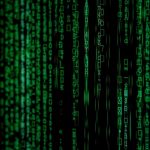Philosophy
TRUTH: A BRIEF HERMENEUTICAL EXCURSION
Published on January 06, 2022
by Louise Mabille
‘The truth.’ Dumbledore sighed. ‘It is a beautiful and terrible thing, and should therefore be treated with great caution.’ ― J.K. Rowling, Harry Potter and the Philosopher’s Stone
Among the strangest aspects of our already strange times is the ambivalent attitude that we as 21st century people seem to have with respect to truth: there appears to be at once too little and too much of it. For some people, the world still seems steeped in outdated rigidities which for them are justified by an illegitimate appeal to transcendent ideas which fall heavily upon ears conditioned by the gazillions of soundbites which envelop us every day. Others seem to be adrift in postmodern relativism, where literally anything goes. The first group is likely to admit that they certainly believe in truth: they may well wish that more people did so. After all, isn’t this precisely what rational enlightened people do? But even the second group, among who we may find a variety of social progressives, still implicitly adhere to the notion of a deeper truth, at the very least the fundamental belief that all viewpoints are equally valid.[1] But what is this mysterious ‘thing’, this truth which we take so casually into our mouths? In our previous essay we have said that philosophy, the discipline which studies truth, is impossible to avoid. The same goes for truth: even those who deny that it exists at all, simply fall back into making a fundamental statement which claims to be true.
This brings us to the nature of truth. Truth is a quality, or a characteristic of statements. This means that there is always a hermeneutical dimension to the encounter with truth. An object by itself is neither true nor false. An apple is neither true nor false, but if I say that there is an apple on the table, I am making a statement which can be verified. But before we continue to the greater matter of truth, we have to take note that there are facts. A fact is something that is indisputable, based on empirical verification and quantifiable measures. They are usually proven through calculation and experience, or are something that definitively occurred in the past. Many people think that when we speak of the most immediate conception of truth, the correspondence theory of truth, we are saying that we encounter the world as a set of facts. True (sic), in the most basic everyday Aristotelian sense of the word [2], ‘truth’ refers to that which corresponds to reality, or as the important Christian thinker Thomas Aquinas put it, ‘Truth is the adequation of things and intellect’ (Veritas est adaequatio rei et intellectus). Ever since the Scientific Revolution, philosophers and scientists alike have tried to equate truth with the encounter with quantifiable fact. The New Atheists often try to do this, but the thinkers who took this idea the furthest were the Logical Positivists, a group of Viennese philosophers who held that only that which could be immediately verified should qualify as knowledge. However, needless to say, this position itself does not lend itself to empirical confirmation. On the most basic level it is possible to identify basic facts as true through experience, which we call a posteriori fact (after experience) such as the fact that we can see an apple on the table in the picture above. But ‘reality’ also includes the mathematical truths, like 2 x 2 = 4, those truths which, as G.E. Moore said, one can discover while laying comfortably on one’s living-room couch! These are a priori facts, discoverable prior to experience.
However, facts alone are merely like figments of thought, or a piece of a puzzle. The word ‘fact’ is just Latin for ‘something done’. Nobody encounters reality as a set of loose, interconnected facts. Nor does one stand ‘apart’ from the world and observe it independently from a distance. Facts always stand in a relationship with one another and they are always encountered against a particular background or context. This should not be taken as an excuse for sneaking in some or other postmodern Trojan horse. Rather, the encounter with truth by the thinking or observing self just begins with the verification of facts. In a criminal courtroom setting, the same set of facts are available to both prosecuting and defending attorneys, but how the material makes sense depends on a number of factors, including how the facts are interpreted and represented by the attorneys presenting their cases, but also how the judge views the evidence. Much has been made about the looming threat of relativism, but in reality, complete and utter disagreement about basic facts seldom occur. As the great twentieth-century philosopher Hans-Georg Gadamer shows, when we encounter a foreign object, engage in a conversation, or try to understand a new text, we actually encounter two ‘zones’ or horizons of understanding: the alien as well as the familiar. The familiar horizons of the interpreter’s world are as integral a part of the event of understanding as is the procedure or methodology of discovering truth. In fact, such a background forms an essential framework for the event of understanding to occur. The awareness of the observer or knower’s participation in the event of understanding Gadamer refers to as the reflexive dimension of understanding. Thinkers as diverse as René Descartes, Wilhelm Dilthey and Friedrich Schleiermacher upheld an essentially Enlightenment ideal of an autonomous subject or self which successfully extricates himself from the immediate entanglements of situated history and what the prejudgments and entanglement imply. However, Gadamer doubted whether a knower could leave his immediate situation in the present merely by adopting an attitude.
As situatedness is inescapable, it may well be that one’s own situatedness is not an obstacle to be overcome, but an essential aspect of recognizing an object as meaningful. To return to our apple example: we may objectively see an object, recognize its redness, its smoothness and its firmness, but in order recognize it as an apple, we have to rely on the history of our experience. Think of the way in which a baby encounters a plethora of sounds, shapes, colours and smells during its first year. Gradually, it begins to recognize its constancy over time, and begin to experience objects as meaningful essences in a greater whole. Or take a work of art: in order to make sense of any work of art, one already has to have some idea of the ontological difference between a work of art and a non-work of art. And to make judgments of beauty, one should have a network of images against which a new image is measured. In a similar way, a reader’s boundedness to his present does not impede his ability to know a new text. The gulf separating him from the alien horizon becomes a productive field of interplay and ground of understanding as his ‘new’ knowledge is gradually interwoven within his existing frame of reference. The reflexive dimension is not an impediment to the act of understanding, but a precondition for the event of understanding itself. As one is already ‘thrown’ into a network of truth assumptions which one shares with other subjects, genuine relativism seldom occurs in practice and is little more than a theoretical chimera, or perhaps an occurrence of bad faith.
With respect to the interpretation of texts or textual hermeneutics, Gadamer opposes the standard notion of an isolated subject which has to ‘dig’ for truth. Instead, he developed a conception of understanding that takes the interpreter’s present participation in history as basic point of departure. Rather than to pretend to ignore the gap which separates us from the context in which a text was originally written, one should consider the act of understanding not in terms of reconstruction but mediation. The past is conveyed into the future: even in the most careful attempts to grasp the past ‘as it was’ understanding, or the encounter with truth remains essentially a mediation or translation of past meaning into the present situation. When it comes to historical truth, Gadamer emphasizes the fundamental continuity of history as a medium encompassing both subject and object. Grasping historical truth is an event, a movement of history itself in which neither interpreter nor text can be thought of as
solitary or autonomous. ‘Understanding itself is not to be thought of so much as an action of subjectivity, but as the entering into an event of transmission in which past and present are constantly mediated. This is what must gain validity in hermeneutical
theory, which is much too dominated by the ideal of a procedure, a method’. [3]
The hermeneutical attitude – it exceeds methodology – is not limited to the consideration of texts, but have been applied to the wider apprehension of truth. Most thinkers today – whether in the analytical or continental tradition accept that one departs from accepting basic correspondence as the most fundamental criterion of truth. However, it is impossible to operate only within a basic correspondence model of truth: as one’s conceptual framework grows through experience, a coherence theory of truth is inevitably implied. Coherence theories of truth hold that truth requires a proper fit of elements within a whole system. It therefore looks at the bigger picture rather than immediate individual facts. Truth, on this view, must be a feature of the overall body of belief considered as a system of cogently interconnected components—what is called the ‘web of belief.’ It may be that an entire physical theory that earns its keep by making predictions or enabling people to control things or by simplifying and unifying otherwise disconnected phenomena. An individual belief in such a system is true if it sufficiently coheres with or makes sense with relation to enough other beliefs; alternatively, a belief system is true if it is sufficiently internally coherent. With respect to our court case example, a just judgment is considered to have been reached when pattern underlying the facts and the real relationship between the facts emerge. This is why it makes sense to read the whole of Scripture and not just the New Testament or one’s favourite passages: the significance of Christ’s sacrifice makes sense when viewed in light of the Fall. It may be said that we view Christ as the Truth, because in Him all things ‘hold together’ (Colossians 1: 17).
The objection may be raised that the coherence theory threatens to ‘cut one off’ from ‘reality’. This is why some thinkers have suggested that belief systems can be compared in pragmatic or utilitarian terms. According to this notion, even if many different systems can be internally coherent, it is likely that some will be much more useful than others. Use is measured against what works in practice, and this assumes already a connectness between self or subject and the world, so one may be permitted to agree with Heidegger that the Cartesian anxiety over being ‘cut off’ from reality’ is overstated: one tends to ‘fall back’ into truth. A more recent variation of pragmatism there is the consensus theory of truth, which holds that truth is what have come to agree upon, for example that ‘truth is valuable. It is closely associated with the German thinker Jürgen Habermas, but this version has proven superfluous and has had very little impact beyond the hallowed halls of academia.
The reader may well ask why it is necessary to defend truth at all? After all, we seem to agree that truth, much like the discipline of philosophy which studies it, is unavoidable: it is as essential to human existence as water and oxygen. Why is it then that those very hallowed halls of academia seem so reluctant to embrace it? Truth sets limits to the power of sinners – a highly unpopular notion in our postmodern era.
Not all facts or truths are good to hear, and while we can change a great deal about our existence, cannot make conform to all our desires. The hostility towards truth in our late modern or postmodern era can be traced to this fact that we increasingly running up against the limits of the extent to which we can change the world. For many, this is a source of anger and frustration. However, for the Christian, there is a sense of comfort in the notion that truth is given and that we do not bear the inhumane responsibility for creating it alone.
1 This is a very old idea. Despite the appearance of radical difference between postmodern relativists and ancient philosophers, there is a strong resemblance between today’s postmodernists and the ancient Sophists, who as a school, tended to believe that ‘truth’ takes shape as you speak it. However, surprisingly enough, today’s progressives are also similar to Plato, who was suspicious about the immediate world of appearance, holding that there is a deeper or higher world of ‘real’ truth behind experienced reality.
2 ‘To say of what is that it is, or of what is not that it is not, is true.’ In other words, the world provides ‘what is’ or ‘what is not,’ and the true saying or thought corresponds to the fact so provided.
3 Hans-Georg Gadamer , Wahrheit und Methode: Grundzuge einer philosophischen Hermeneutik. Tiibingen: Mo hr, 1960, pp. 274-275.
Louise Mabille is a researcher currently attached to the Faculty of Theology at the NorthWest University (NWU) at Potchefstroom. She holds a PhD in philosophy from the University Pretoria (on Nietzsche’s notion of justice). She was an Erasmus scholar and completed a second PhD on Milton and the modern notion of free speech at the University of Hull, Yorkshire.




